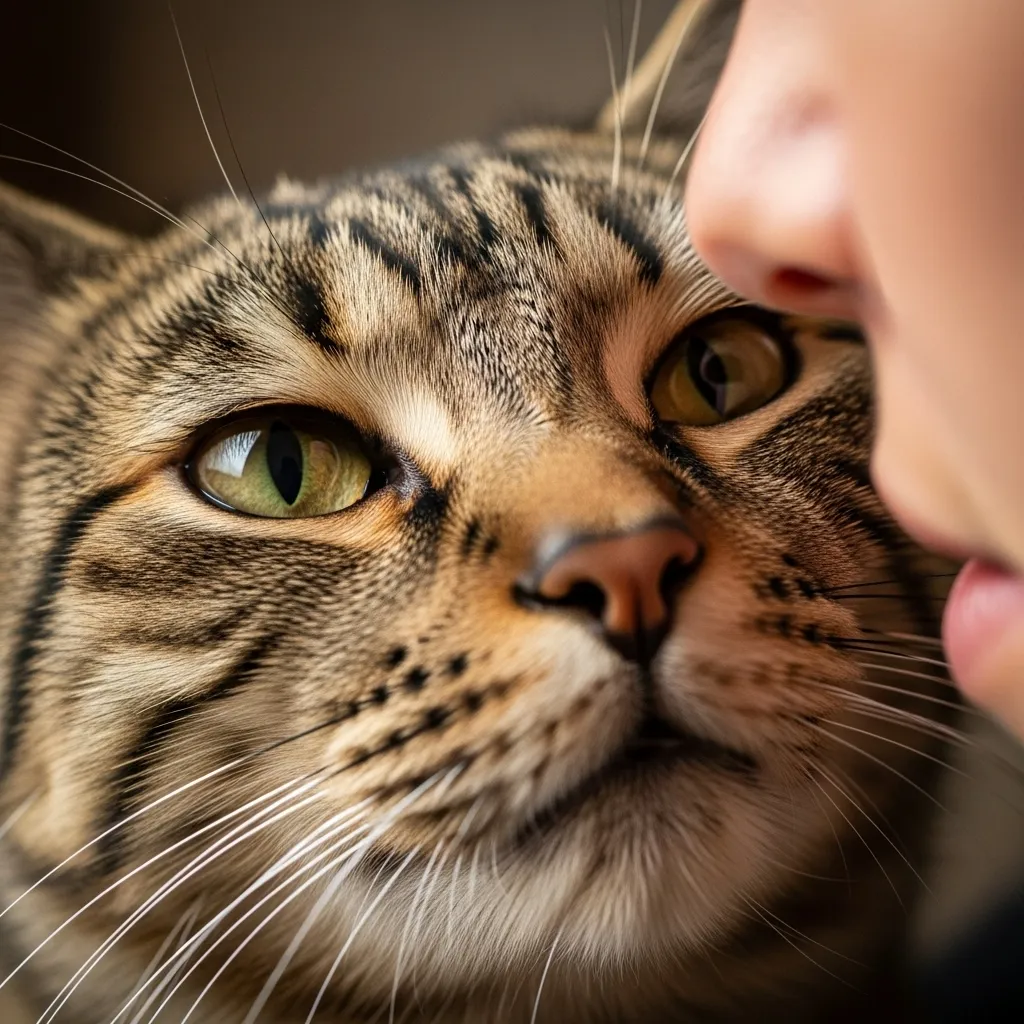
Eyes and Ears: Windows to the Feline Soul
After the tail, a cat’s eyes and ears are the most powerful tools for expressing its emotions. Their mobile ears can pinpoint sounds with incredible accuracy, and their pupils can change dramatically in response to both light and emotion.
The Eyes Have It
A cat’s gaze can tell you a great deal about its level of comfort and trust.
The Slow Blink: Often called a “cat kiss,” the slow blink is one of the most positive signals a cat can give. When a cat looks at you and slowly closes and opens its eyes, it is communicating trust and affection. It’s a sign that they feel completely comfortable and safe in your presence, as they are briefly closing their eyes and breaking their gaze. You can return the gesture by slow-blinking back at your cat to show that you are not a threat and that you return the sentiment.
Pupil Dilation and Constriction: While pupil size is primarily affected by ambient light, strong emotions can also cause rapid changes. Dilated (large) pupils can signify excitement, fear, or anxiety. You might see this during an intense play session or when the cat is startled by a loud noise. Conversely, constricted (slit-like) pupils in a well-lit room can indicate arousal and focus, but often in an aggressive or agitated context. A cat that is about to act aggressively may have thin, “slit” pupils and a hard, direct stare.
Staring: A direct, unblinking stare is often a sign of dominance or a challenge in the feline world. If a cat is giving you a “hard stare” with a tense body, it’s best to avert your gaze and give it space. However, a relaxed, soft-eyed gaze accompanied by a calm body posture is simply a sign of interest and affection.
Listening with Their Ears
With 32 muscles controlling each ear, cats can rotate them 180 degrees, making them incredibly expressive.
Forward and Relaxed: When a cat’s ears are facing forward in a neutral position, it is generally relaxed, content, or casually interested in its surroundings.
Alert and Swiveling: Ears that are upright and swiveling, either together or independently, indicate that the cat is alert and listening intently to something. They are tracking a sound to gather more information about their environment.
Flattened (“Airplane Ears”): When a cat’s ears are flattened sideways against its head, resembling airplane wings, this is a definitive sign of fear, irritation, or aggression. The cat is feeling defensive and threatened. This is a clear signal to back off. Forcing interaction with a cat showing “airplane ears” is a common mistake that can result in being scratched or bitten.
Turned Back: Ears that are slightly turned back but not fully flat can indicate annoyance or that the cat is listening to something behind it. Context from the rest of the body is key to telling the difference.















